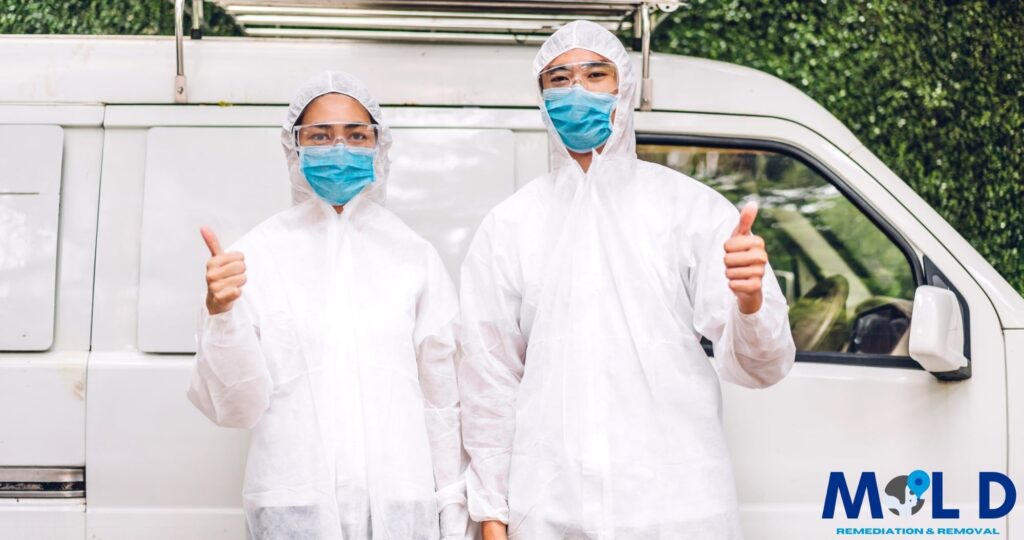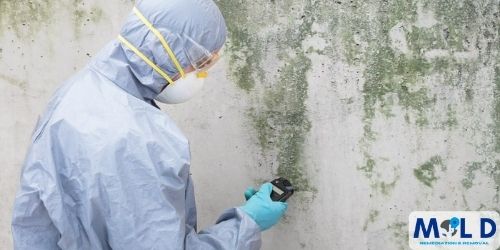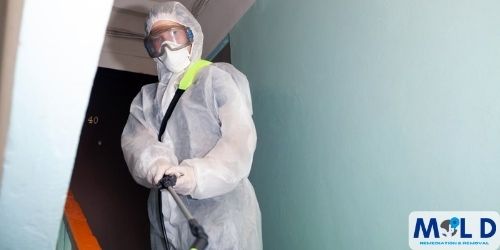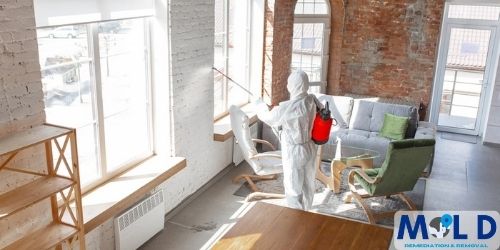You’re in luck if you live in Kyle and need help with mold remediation because there are a number of reputable companies in the area that specialize in this service. Mold can be a frustrating and potentially harmful problem, but these companies have the expertise and experience to handle it effectively. Whether you’re dealing with a small mold issue or a larger infestation, these professionals are ready to tackle the problem and restore your home to a safe and healthy environment. Look no further than the mold remediation companies in Kyle to address your mold concerns with friendly and efficient service.
1. What is Mold Remediation?
Mold remediation refers to the process of removing and eliminating mold from a property. Mold is a type of fungus that thrives in damp and humid environments, and it can cause various health issues and property damage. Mold remediation is essential to ensure the health and safety of individuals living or working in the affected space, as well as to prevent further contamination and structural damage. Mold remediation involves a series of steps, including inspection, testing, and the development of a remediation plan, as well as the removal, cleaning, and restoration of the affected area.
2. Importance of Mold Remediation Companies
Mold remediation companies play a crucial role in addressing mold issues effectively and efficiently. Mold remediation requires specialized knowledge, skills, and equipment to ensure thorough removal and prevention of mold growth. Hiring a professional mold remediation company offers several key benefits:
-
Expertise and Experience: Mold remediation companies have trained professionals who are knowledgeable about different types of mold, their growth patterns, and the most effective methods for removal. They have extensive experience in dealing with mold infestations of varying severity.
-
Safety: Mold remediation can pose health risks, as exposure to mold spores can lead to respiratory problems, allergies, and other health issues. Mold remediation companies prioritize safety by following strict protocols, using protective equipment, and employing effective containment measures to prevent cross-contamination.
-
Proper Equipment and Techniques: Mold remediation companies have access to specialized tools and equipment designed specifically for mold removal and remediation. These tools, such as HEPA vacuums, air scrubbers, and antimicrobial treatments, enable effective removal and ensure the thorough cleaning and disinfection of the affected area.
-
Time and Cost Efficiency: Mold remediation companies can complete the remediation process in a timely manner, minimizing disruptions to your daily life or business operations. They also have the expertise to identify the root cause of the mold growth and address it to prevent future infestations, saving you from potential costly repairs down the line.
-
Peace of Mind: By hiring a professional mold remediation company, you can have peace of mind knowing that the mold issue will be handled efficiently and effectively. Professionals will ensure that all necessary measures are taken to eliminate the mold problem and restore a safe and healthy environment.

3. The Process of Mold Remediation
Mold remediation typically involves a series of steps to identify, contain, remove, and prevent future mold growth. Here are the key stages of the mold remediation process:
3.1 Mold Inspection
The first step in mold remediation is a thorough inspection of the property by trained professionals. During the inspection, the experts will assess the extent of the mold infestation, identify the source of moisture or dampness causing the mold growth, and determine the best course of action for remediation.
3.2 Mold Testing
In some cases, mold testing may be necessary to identify the specific types of mold present and their concentration. Mold testing involves taking samples from the affected area and sending them to a laboratory for analysis. This helps in determining the severity of the mold infestation and guiding the remediation process.
3.3 Identification of Mold Types
Once the mold samples are analyzed, the mold remediation company will identify the types of mold present. Different types of mold require specific removal and remediation methods. By identifying the mold types, the professionals can determine the most effective approach for eradicating the mold.
3.4 Developing a Remediation Plan
Based on the inspection and testing results, the mold remediation company will develop a comprehensive remediation plan. The plan outlines the scope of work, containment measures, removal and cleaning techniques, and any necessary repairs or restoration needed to address the mold infestation effectively.
3.5 Containment
Containment is a crucial step in mold remediation to prevent the spread of mold spores to unaffected areas. The professionals will use plastic sheeting and negative air pressure machines to seal off the contaminated area, ensuring that mold spores do not escape during the removal process.
3.6 Mold Removal
The actual removal of mold begins once proper containment measures are in place. Mold remediation professionals will use appropriate techniques and equipment to safely remove the mold from all affected surfaces, including walls, ceilings, floors, and personal belongings. Depending on the severity of the infestation, physical removal or specialized treatments may be used.
3.7 Cleaning and Disinfecting
After the mold is removed, the affected area will be thoroughly cleaned and disinfected to eliminate any remaining mold spores. Mold remediation companies use specialized cleaning agents and techniques to ensure that the area is completely free from mold and any potential health hazards.
3.8 Restoration and Repairs
Once the mold has been successfully removed and the area cleaned, any necessary repairs or restoration work will be undertaken to restore the property to its pre-mold condition. This may involve repairing damaged walls, replacing flooring, or addressing any other structural issues that were caused by the mold infestation.
3.9 Post-Remediation Testing
After the remediation process is completed, the mold remediation company may conduct post-remediation testing to ensure that the area is free from mold and spores. This testing helps verify the effectiveness of the remediation efforts and provides assurance that the property is safe for occupancy.
3.10 Prevention Measures
To prevent future mold growth, mold remediation companies may suggest or implement preventive measures such as improving ventilation, addressing moisture sources, installing dehumidifiers, or recommending regular inspections and maintenance.
4. Qualities to Look for in a Mold Remediation Company
When searching for a mold remediation company, it’s essential to choose one that meets certain criteria to ensure quality service and successful remediation. Here are some qualities to look for:
4.1 Certification and Licensing
A reputable mold remediation company should have the necessary certifications, licenses, and accreditations. This demonstrates their compliance with industry standards and their commitment to delivering high-quality services.
4.2 Experience and Expertise
Consider the company’s experience in the mold remediation field. A company with years of experience has likely encountered a range of mold issues and can offer valuable insights and effective solutions based on their expertise.
4.3 Insurance Coverage
Ensure that the mold remediation company carries adequate insurance coverage. This protects you from any liability or financial burden in case of accidents or damages during the remediation process.
4.4 Safety Measures
Safety should be a top priority for any reputable mold remediation company. They should follow strict safety protocols, provide their employees with proper protective equipment, and ensure compliance with industry best practices.
4.5 Reputation and Reviews
Check the company’s reputation and customer reviews. Look for testimonials and feedback from previous clients to gauge the quality of their work, customer satisfaction levels, and their overall reputation in the industry.
4.6 Cost and Pricing
While cost shouldn’t be the sole determining factor, it’s essential to consider the company’s pricing structure and whether it aligns with your budget. Request quotes from multiple companies to compare prices and services offered.
4.7 Guarantee or Warranty
A reliable mold remediation company should offer a guarantee or warranty for their work. This demonstrates their confidence in their ability to deliver effective mold removal and remediation.
4.8 Availability and Response Time
Timeliness is crucial in mold remediation to prevent further damage and health risks. Choose a company that is responsive, available for emergency services, and can start the remediation process promptly.
4.9 Customer Service and Communication
Good customer service is essential. Choose a company that is attentive, responsive to inquiries, and provides clear and timely communication throughout the entire mold remediation process.
4.10 Eco-Friendly Practices
Consider a mold remediation company that prioritizes eco-friendly practices. They should strive to minimize the environmental impact of their work by using safe and sustainable methods and products.

5. Factors to Consider Before Hiring a Mold Remediation Company
Before hiring a mold remediation company, there are several factors to consider to ensure you make an informed decision that best meets your specific needs. These factors include:
5.1 Severity of Mold Infestation
Evaluate the severity of the mold infestation. Determine the size and extent of the affected area, as well as any potential health risks associated with the mold growth. This will help you communicate your needs to the mold remediation company and ensure they have the expertise and resources to handle the situation.
5.2 Scope of Work
Consider the specific services you require from a mold remediation company. Determine whether you need a full-scale remediation that includes testing, removal, cleaning, and restoration, or if you only require specific services tailored to your situation.
5.3 Timeframe and Deadlines
Discuss the timeframe and project deadlines with prospective mold remediation companies. Assess their ability to complete the work within your desired timeframe and consider any potential disruptions to your daily life or business operations.
5.4 Local Regulations and Guidelines
Familiarize yourself with the local regulations and guidelines related to mold remediation. Ensure that the company you hire follows these regulations and has a thorough understanding of any specific requirements in your area.
5.5 Budget and Affordability
Set a budget for mold remediation and consider the affordability of different companies. Request multiple quotes and compare prices, ensuring that the company you choose offers competitive pricing without compromising on quality.
5.6 Services Offered
Carefully review the services offered by prospective mold remediation companies. Ensure that they provide the specific services you require, such as mold testing, removal, cleaning, restoration, or preventative measures.
5.7 References and Recommendations
Ask for references or recommendations from the mold remediation company. Contact previous clients and inquire about their experiences with the company’s services, level of professionalism, and the effectiveness of the mold remediation.
5.8 Company Location and Coverage Area
Consider the location and coverage area of the mold remediation company. Choose a company that operates within your local area to ensure prompt response times and availability for future maintenance or emergency services.
5.9 Written Contract and Terms
Before finalizing the hiring process, ensure that all terms and conditions are clearly outlined in a written contract. Review the contract thoroughly, including pricing, timelines, guarantees, and any warranties provided by the company.
5.10 Availability for Emergency Services
Consider the mold remediation company’s availability for emergency services. Mold growth can pose immediate health risks and requires prompt attention. Choose a company that offers 24/7 emergency response to mitigate any potential damage or health hazards.
6. Services Provided by Mold Remediation Companies
Mold remediation companies offer a range of services to address different aspects of mold infestation and related issues. Here are some common services provided by mold remediation companies:
6.1 Mold Inspection and Testing
Mold remediation companies perform comprehensive mold inspections to identify the extent and causes of mold growth. They also conduct mold testing to determine the specific types of mold present and their concentration levels.
6.2 Mold Removal and Remediation
Mold remediation companies specialize in safely removing mold from affected areas. They use proper techniques and equipment to remove all traces of mold and prevent further contamination.
6.3 Water Damage Restoration
Many mold remediation companies also provide water damage restoration services. They can assess and repair any water-related issues that have contributed to mold growth, such as leaks, flooding, or excessive moisture.
6.4 Air Quality Testing
In addition to mold testing, some mold remediation companies also offer air quality testing. This assesses the overall indoor air quality and identifies any potential contaminants besides mold that may be present in the environment.
6.5 Mold Prevention and Control
Mold remediation companies can suggest preventive measures to control moisture and prevent future mold growth. This may include recommending ventilation improvements, moisture barriers, or moisture control systems.
6.6 HVAC System Evaluation and Cleaning
Mold can spread through HVAC systems, affecting the air quality throughout the property. Mold remediation companies can evaluate and clean HVAC systems to eliminate mold spores and improve indoor air quality.
6.7 Direct Insurance Billing
Many mold remediation companies work directly with insurance companies to handle insurance claims. They can assist with the documentation and billing process, making it easier for clients to navigate the insurance process.
6.8 Home and Business Property Restoration
In addition to mold removal, many mold remediation companies offer property restoration services. These services may include repairing structural damage caused by the mold infestation or restoring the property to its pre-mold condition.
6.9 Odor Elimination
Mold infestations often come with unpleasant odors. Mold remediation companies can provide odor elimination services to remove any lingering mold odors and restore the freshness of the air in the affected area.
6.10 Emergency Response Services
Some mold remediation companies offer 24/7 emergency response services. They are available to handle mold-related emergencies promptly, minimizing potential damage and health risks.

7. Common Mold Remediation Techniques
Mold remediation companies employ various techniques to remove mold and restore a mold-free environment. Here are some common mold remediation techniques used by professionals:
7.1 HEPA Vacuuming
HEPA (High-Efficiency Particulate Air) vacuums are used to remove mold spores and debris from surfaces. These vacuums have specialized filters that can capture even the smallest mold particles, ensuring thorough removal.
7.2 Dry Ice Blasting
Dry ice blasting involves using small pellets of dry ice to blast mold-infested surfaces. The rapid temperature change caused by dry ice can effectively remove mold without causing damage to the underlying surface.
7.3 Soda Blasting
Similar to dry ice blasting, soda blasting uses sodium bicarbonate (baking soda) to remove mold from surfaces. Soda blasting is a non-toxic and eco-friendly method that can be used on a variety of materials without causing damage.
7.4 Chemical Treatments
Chemical treatments, such as biocides or antimicrobial solutions, are used to kill mold and prevent its regrowth. Mold remediation professionals apply these treatments to affected surfaces to ensure thorough cleaning and disinfection.
7.5 Encapsulation
For surfaces that cannot be easily cleaned or removed, encapsulation may be used. This involves applying a specialized sealant or coating to encapsulate the mold and prevent further release of mold spores.
7.6 Physical Removal
Physical removal involves physically removing and disposing of mold-infested materials, such as drywall, carpeting, or insulation. This method is used when the materials are too damaged or cannot be effectively cleaned.
7.7 Duct Cleaning
Mold can spread through HVAC ducts, contributing to poor indoor air quality. Mold remediation companies can clean and sanitize HVAC ductwork to remove any mold spores and prevent further contamination.
7.8 Dehumidification
Excessive moisture is often a contributing factor to mold growth. Mold remediation companies may use dehumidifiers to control humidity levels and reduce the chances of mold regrowth.
7.9 Anti-Microbial Treatment
Anti-microbial treatments are applied to surfaces after mold removal to inhibit the growth of mold and prevent future infestations. These treatments create a protective barrier that prevents mold from returning.
7.10 Fungus Capping
In some cases, if the mold growth is contained within a small area and poses no immediate health risks, fungus capping may be used. This involves encapsulating the area with a protective covering to prevent the release of mold spores.
8. Risks and Safety Precautions in Mold Remediation
Mold remediation involves certain risks and hazards that need to be addressed to ensure the safety of both the occupants and the remediation professionals. Here are the key risks associated with mold remediation and the necessary safety precautions:
8.1 Health Risks of Mold Exposure
Exposure to mold spores can cause various health issues, particularly for individuals with respiratory conditions or weakened immune systems. It is important to take necessary precautions to avoid direct contact with mold during the remediation process.
8.2 Personal Protective Equipment (PPE)
Mold remediation professionals wear appropriate personal protective equipment (PPE) to minimize their exposure to mold and prevent the spread of spores. This may include gloves, masks, goggles, respirators, and protective clothing.
8.3 Compliance with Safety Standards
A reputable mold remediation company adheres to safety standards and protocols to protect both their workers and the occupants of the property. They follow guidelines set by organizations such as the Occupational Safety and Health Administration (OSHA) to ensure a safe working environment.
8.4 Proper Handling and Disposal of Mold
Mold remediation professionals handle and dispose of mold-infested materials properly. This prevents further contamination and the spread of mold spores. They ensure proper containment, sealing, and disposal methods in compliance with local regulations.
8.5 Containment Barriers
Containment barriers, such as plastic sheeting, are used to isolate the affected area and prevent cross-contamination. These barriers help contain mold spores and prevent them from spreading to other parts of the property during the removal process.
8.6 Air Filtration
Mold remediation professionals use air filtration devices, such as air scrubbers and HEPA filters, to remove airborne mold spores during the remediation process. This helps purify the air and reduce the risk of exposure.
8.7 Regular Monitoring and Testing
Throughout the remediation process, professionals regularly monitor the air quality and conduct testing to ensure that mold spore levels are within acceptable limits. This can help determine the effectiveness of the remediation efforts and ensure a safe environment.
8.8 Employee Training and Certification
Mold remediation professionals undergo proper training and certification to handle mold safely. They receive education on mold identification, removal techniques, safety protocols, and the proper use of equipment and protective gear.
8.9 OSHA Guidelines
Mold remediation companies abide by the guidelines set by OSHA for handling mold remediation. These guidelines include requirements for personal protective equipment, containment measures, handling and disposal of mold-infested materials, and worker safety.
8.10 Minimizing Cross-Contamination
Cross-contamination can occur when mold spores spread to unaffected areas during the remediation process. Mold remediation professionals take steps to minimize cross-contamination by employing proper containment measures, using negative air pressure, and sealing off entry points.

9. Frequently Asked Questions About Mold Remediation
As mold remediation can be a complex and unfamiliar process, it is common to have questions. Here are some frequently asked questions about mold remediation:
9.1 How long does mold remediation take?
The duration of mold remediation depends on various factors, including the severity of the mold infestation, the size of the affected area, and the required repairs. In general, mold remediation can take anywhere from a few days to several weeks.
9.2 Is mold remediation covered by insurance?
Insurance coverage for mold remediation varies depending on the policy and the specific circumstances. Some insurance policies may cover mold remediation if it is a result of a covered peril or if it causes significant property damage. It is important to check with your insurance provider to understand your coverage.
9.3 Can I remove mold myself?
While minor mold issues can sometimes be addressed with DIY methods, it is generally recommended to hire a professional mold remediation company for effective and safe removal. Professional expertise is vital to ensure thorough mold removal, prevent cross-contamination, and address potential health risks.
9.4 What are the signs of mold infestation?
Signs of mold infestation may include visible mold growth, a musty or earthy smell, water stains or discoloration on walls and ceilings, increased allergic reactions or respiratory symptoms, and unexplained deterioration of building materials.
9.5 How can I prevent future mold growth?
To prevent future mold growth, it is important to address any sources of moisture or dampness. This may involve fixing leaks, improving ventilation, controlling humidity levels, and promptly addressing any water damage or moisture issues.
9.6 Can mold come back after remediation?
While professional mold remediation should effectively remove all traces of mold, there is a possibility of mold regrowth if the underlying moisture issue is not addressed. This is why it is essential to identify and address the root cause of the mold growth to prevent recurrence.
9.7 Is mold remediation dangerous?
Mold remediation can involve risks, particularly for those with respiratory conditions or weakened immune systems. However, professional mold remediation companies prioritize safety by following strict protocols, using protective equipment, and employing effective containment measures to minimize health risks.
9.8 How much does mold remediation cost?
The cost of mold remediation can vary depending on factors such as the size of the affected area, the severity of the mold infestation, the necessary repairs or restoration, and the specific services required. It is advisable to request quotes from different mold remediation companies to compare prices and services offered.
9.9 Will mold remediation disrupt my daily life?
Mold remediation can cause some disruptions, particularly if the affected area is large or extensive repairs are needed. However, professional mold remediation companies strive to minimize disruptions, working efficiently to complete the remediation process within the agreed-upon timeframe.
9.10 Are there any DIY mold removal methods?
While DIY methods may work for minor mold issues, it is generally recommended to hire a professional mold remediation company for effective and safe removal. Improper handling of mold can lead to cross-contamination and may not fully address the underlying cause of the infestation.
10. Conclusion
Mold remediation is a crucial process for addressing and preventing mold growth in a property. By hiring a professional mold remediation company, you can ensure the thorough removal of mold, the restoration of a safe and healthy environment, and the implementation of preventive measures to minimize the risk of future infestations. When choosing a mold remediation company, consider factors such as certification, experience, reputation, affordability, and the range of services provided. By taking the necessary steps to address mold issues promptly and effectively, you can protect the health of yourself and others, as well as safeguard the integrity of your property.
